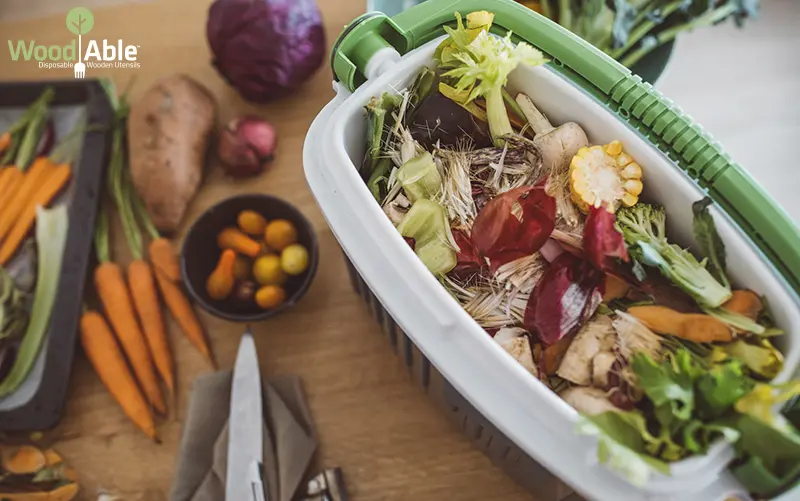WoodAble Blog
The How-To’s of Home Composting
We have been accustomed to tossing kitchen scraps and wasted food into the trash to be hauled off to a landfill. But the landfills are full, and the methane gas they expel from incomplete decomposition is toxic. Methane has as much as 80 times more earth warming capacity than carbon dioxide. It’s a major contributor to global warming.
About 30% of what each of us throws away could be composted, greatly reducing landfill waste. States and municipal authorities are moving forward with measures to enforce separate organic waste collection to stop the landfill crisis.
California has already made it mandatory to put food waste and yard clippings into ‘green’ curbside bins for pickup, or else do home or community composting, to turn old food into rich organic soil that can be used to grow more food, or to regenerate eroded land.
But you don’t have to wait for legislation. You can start now by making a bin or compost heap in the backyard.
The “home compostable” label applies to products and materials that are designed to break down and compost in a home compost environment, at ambient temperatures and with a natural microbial community.
What can be composted at home?
- Brown matter – dried leaves, branches, twigs, nut shells, house plants, shredded newspaper, paper or cardboard, sawdust. WoodAble utensils qualify as brown matter — just like a tree branch — because there is no coating on the utensil.
- Green matter – kitchen scraps such as fruits, vegetables, starches, tea bags, coffee grounds and the coffee filter, grass clippings
- NO animal matter, no dairy products, fats or grease. These attract rats and other wildlife.
- NO wooden or plastic products labeled as compostable. These still need to be broken down by industrial machines and chemicals.
- NO diseased or chemically-treated foods or clippings
- NO industrial ink or glossy paper (Find out if your newspaper uses acceptable soy ink.)
Till up the ground to allow worms to move into the compost pile more easily. Add your composting materials in wet and dry layers, starting with twigs to keep the earth below aerated. Then top it with some grass clippings to accelerate the process, and cover it with a tarp or something that will keep the heat in. Keep it slightly moist. Turn the pile over with a shovel once in a while to aerate it. It will eventually break down into soft soil.
How long does it take for your trash to turn into compost treasure?
The smaller the size of the compost heap, the smaller the pieces, and the warmer the weather, the faster your compost will decompose. It could take between three and 12 months.

